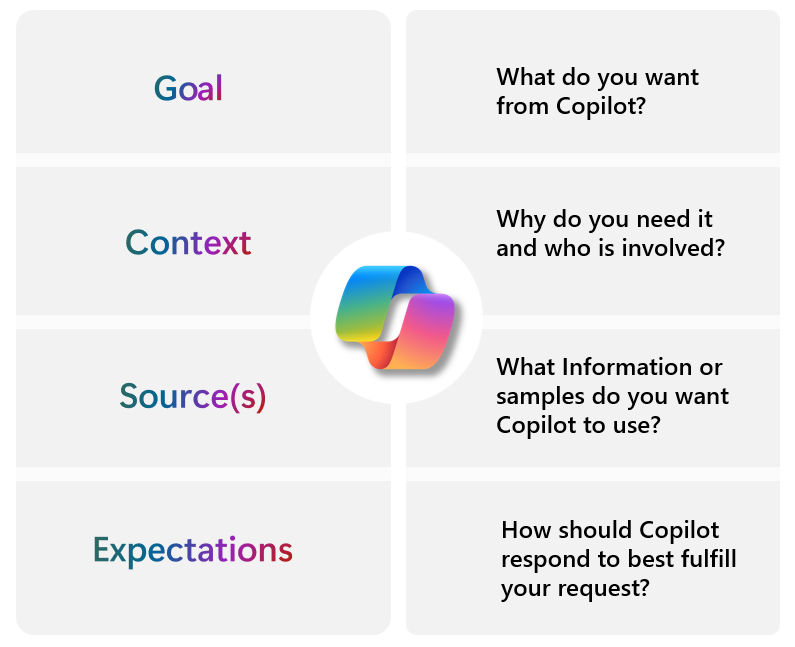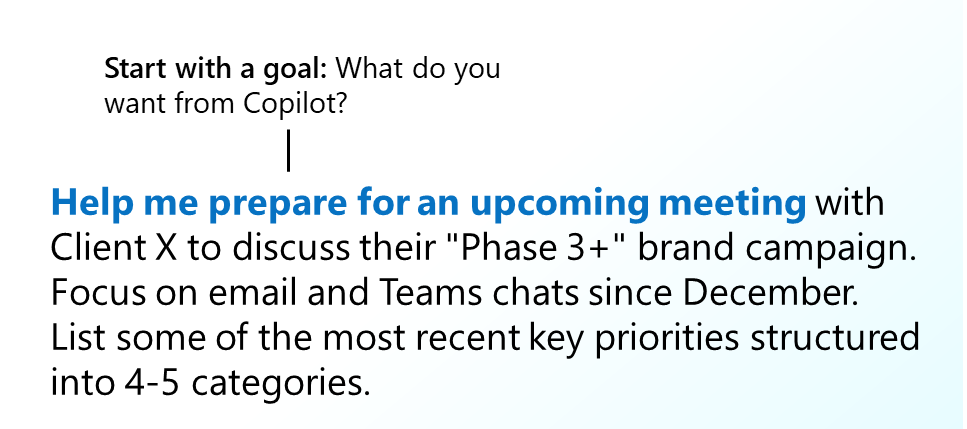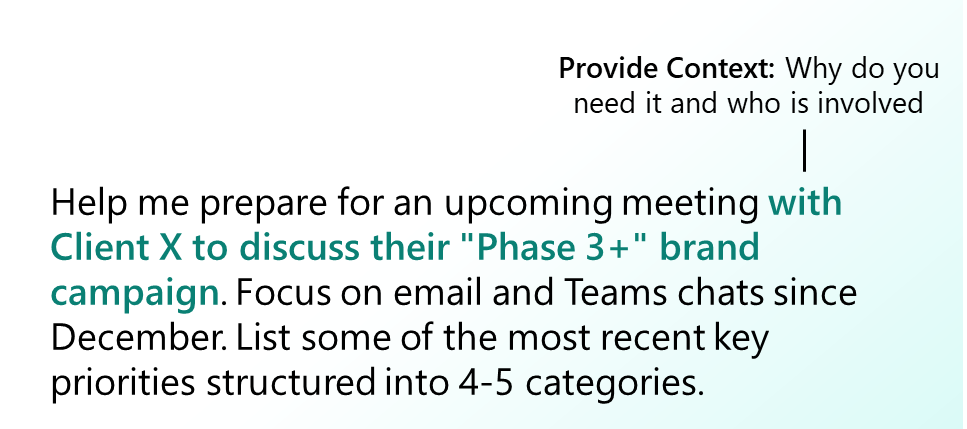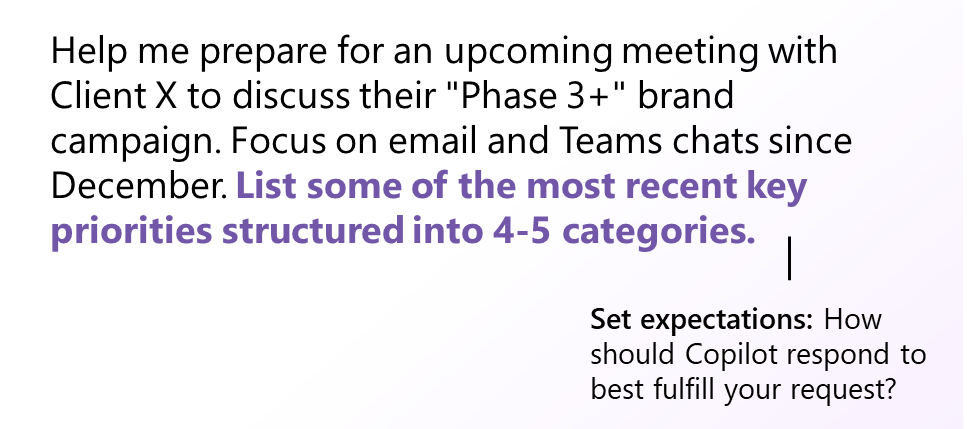Explore the art of the prompt
An effective prompt can significantly enhance Copilot's output, ensuring accurate and contextually appropriate responses. Prompts can include four parts: the goal, context, expectations, and source, as described in the following image:

You can put a little or a lot into a prompt, but all that you need is a clear goal. If you want to be more specific, add the other parts. You often need to include more than a goal to get the results you want. Here’s an example of a prompt that includes a goal and source: :
"Write a summary based on all emails from Sam in the past two weeks. "
And here’s an example that includes a goal, context, and the expectations:
"Draft an outline of a training manual about time management. Our audience includes professionals who work in a hybrid environment and constantly need to attend virtual meetings and meet deadlines. The tone of the document must be friendly and suggestive."
When you ask someone for something at work, you should provide context and resources. The same goes for working with Copilot. When you ask it to do something for you, the quality of what you get back is a function of how you make the request. And knowing how to prompt is the key to unlocking the power and potential of generative AI. To get the best response, it’s important to know how to frame and phrase your Copilot prompts.
The following steps highlight the most important things to consider when building an effective prompt.
1. Start with a goal
Specify the output you want from Copilot. Do you want bullet points or an essay? Is this going to be an email or the start of a brainstorming session? Generative AI excels at imitation—large language models work by mimicking human conversations—so try to give examples of what you’d like the output to look like. For example:
- “Write this email in a casual, approachable style.”
- “Write a very structured memo; it’s fine for the paragraphs to be long and complex.”

2. Provide context
Give any context or relevant details about what outcome you’re working toward. If you’re preparing for a client meeting, or trying to write a rousing all-hands speech, let Copilot know. If it should focus on a particular client, which one? And what part of their campaign are you thinking about? With traditional search, people are so accustomed to being concise. They typically use just a few key words that end up returning many links. They must then do a lot of processing on their own. But with Copilot, being more descriptive gets you better responses.

3. Define a source
It’s not a requirement, but if you specify what information sources or samples Copilot should use, you get better results. Go broad, or tag specific files. Specify what dates to focus on, or what meetings it should pull from.
Lastly, don't be afraid to ask Copilot to explain how it arrived at a response. Consider this analogy - working with Copilot is similar to how math teachers ask students to show their work. When they do so, they get better answers from the kids. Copilot is no different. As you probably know, AI tools can sometimes generate incorrect or questionable responses. Put Copilot on the spot and ask it to validate how it got the results that it did.

4. Set expectations
State your expectations for how Copilot should deliver its response. What audience is it aimed at? What kind of tone are you thinking for this assignment? Usually, that involves some explanation about who you are and what you’re trying to achieve. For example:
- “Explain this problem to me as if I were a novice-level coder.”
- “I’m a busy VP. Give me only the very top-line takeaways.”
